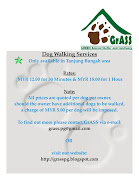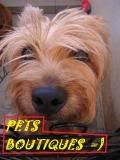
First Row From Left To Right:Figure A to F
Second Row From Left To Right: Figure G to L
xxxxxxxxxxxxxxxxxxxxxxxxxxxxx
Constructing the Dog Agility Course
Safety Alert:
Always make certain that the construction is sound before allowing your pet to run the course.
1.
The first of the obstacles is the A-frame. Start with a sheet of 4'x8' plywood. Use a table saw or jigsaw to rip it to 3'x 8' (figure A). To make the 3'x8' piece rigid, build a frame made from 2x4s attached to the underside of the board (figure B). Attach them with a pneumatic nail gun through the face of the plywood into the 2x4 (figure C). Since the length of each side of the A-frame is eight feet long, use 8' 2x4s so only to have to cut pieces to cross the 3' width.
2.
Lift the structure up on its side and slide in 2x4s that have been cut to size to fit between the 8' 2x4s (figure D). Attach them with the pneumatic nail gun as well.
3.
The wooden rungs aid your dog's traction as he crosses the A-frame. Start measuring from the bottom of the panel every 12 inches, marking these with lines across the width of the panel. The rungs can be made from ripping a 2x4 in half and then cutting pieces that are 35", so that there is about 1/2" of reveal on either side of the panel. Attach the rungs using a bead of wood glue and then a pneumatic brad nailer with 1-1/2" nails (figure E).
4.
Paint the A-frame. The paint is a standard exterior house paint mixed with sand to add traction to the walls. Don't be afraid to paint generously – a second coat is definitely recommended. Colors are to your preference, but having two different colors on one side of the A- frame is recommended so your dog can get a clear picture of the obstacle (figure F).
5.
To attach the two sides of the A-frame together, use 3" hinges at the top and attach the two pieces (figure G).
6.
To hold the structure in different widths of straddle, attach eye-rings about midway down on the inside of the obstacle. Use a chain through the eye-rings to adjust the height (figure H).
7.
For the mini teeter, the plank will need to be a standard 8' 2"x12" board. For the base, you will need 2" PVC pipe as well as 2" PVC fittings.
8.
Cut the 2x12 board to 7'. Once the board is cut, attach two pieces of 2x4 to one side of the board, one 3/4" to the left of the center and the other 3/4" to the right of the center of the 2x12. This is going to be used to keep the plank in place once on the base of the teeter (figure I).
9.
With 2x4s securely in place, paint the plank (figure J). Again, use paint that has sand added. It is best to paint the ends of the plank brightly so your dog can easily decipher it as he approaches.
10.
To build the base of the teeter obstacle, you are going to use 2" PVC pipe and fittings. Start by cutting the 2" pipe into the following pieces:3 @ 14"4 @ 8"4 @ 5"
11.
Assemble the base using PVC primer and glue (figure K). Two of the 14" pieces make the outside edges of the base. There is a 90 degree fitting attached to either end of these.
12.
Add an 8" piece to either of the 90 degree fittings. To the ends of the 8" pieces, add a "T" fitting with the additional female pointing straight up. Repeat the process for the rest of the bottom of the base.
13.
Using the 5" pieces to build up, insert a 5" piece then a "T" fitting with the additional female facing the other side of the base. Add another 5" piece going and use a cap to seal the top. Between the two remaining females in the vertical "T" connectors, use your last 14" piece of pipe.
14.
The last step is to drill 3/4" holes into the top 5" pieces so that you can insert a piece of 3/4" metal pipe between them. This will be used as the support for the teeterboard.
15.
The last of the obstacles is the weave poles (figure L). These too are made from PVC pipe (1") and fittings.
16.
The weave poles general performance requirements are: the poles are to be at least 36" tall and should be 22" apart. They are to be a part of a semi-rigid structure that's base is to be no more than 3/4" high. 22" pieces of PVC as the runners (spacer bars) were connected by "T" connectors. Each "T" had a 37" weave pole for a total of six poles.
17.
To make the weave poles stay upright, use a "T" connector at each end with some extra pieces of pipe sticking out horizontally.












































